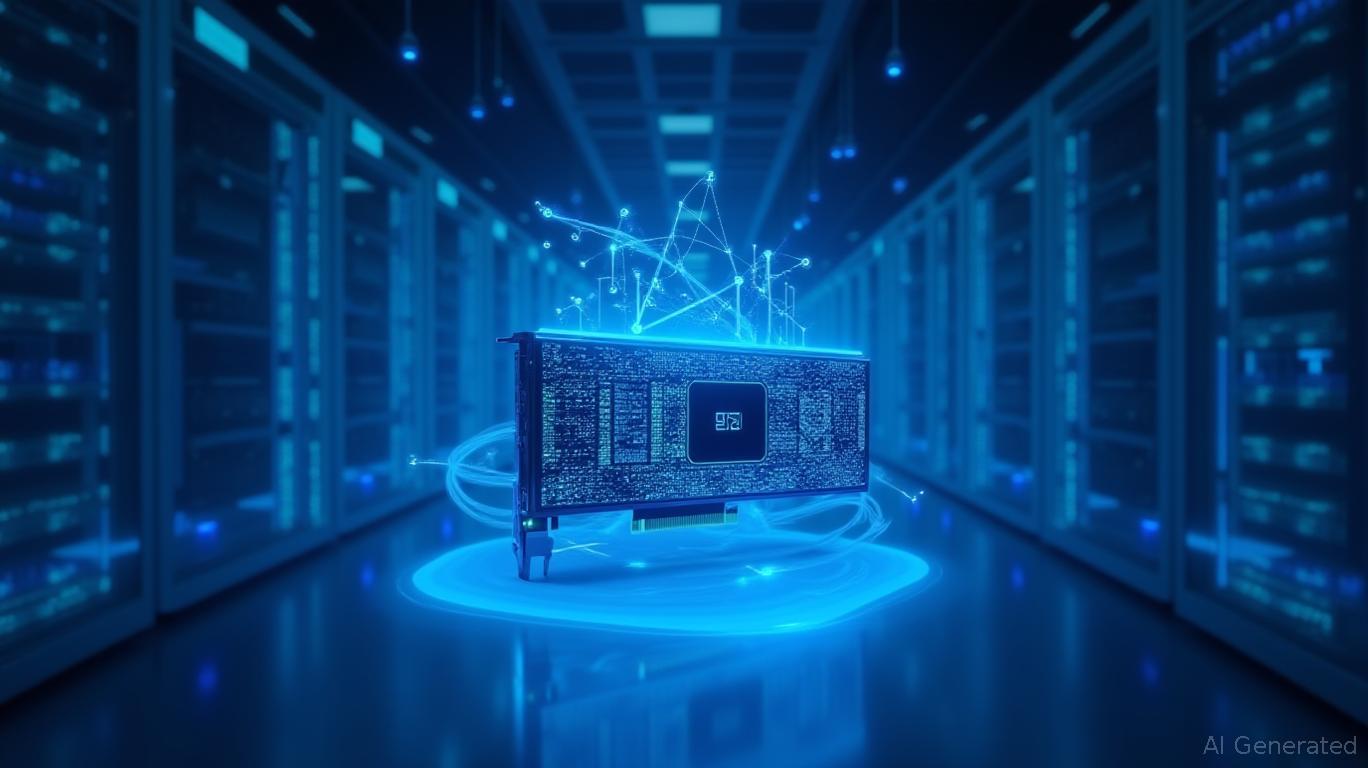AInvest Newsletter
Daily stocks & crypto headlines, free to your inbox
The AI revolution is not just about algorithms—it's about the infrastructure that powers them. At the heart of this revolution sits
, whose graphics processing units (GPUs) have become the de facto engines of modern artificial intelligence. With an estimated 80–90% share of the AI accelerator market by 2025, NVIDIA's dominance is underpinned by a multi-pronged strategy: relentless innovation in hardware, a sprawling software ecosystem, and strategic acquisitions that lock in customers across industries. While competitors like and vie for position, NVIDIA's full-stack approach has cemented its role as the linchpin of the AI-driven economy.NVIDIA's GPU lineup—flagships like the A100, H100, and the upcoming NVL (code-named Blackwell)—are the gold standard for training and deploying large-scale AI models. These chips are not just fast; they're optimized for parallel processing, which is critical for tasks like image recognition, natural language processing, and generative AI. Their latest HGX systems, which bundle multiple GPUs into high-speed interconnects, enable data centers to handle petabyte-scale datasets with unprecedented efficiency.

The hardware advantage is clear, but NVIDIA's true moat lies in its ecosystem.
NVIDIA's CUDA platform, the de facto programming framework for GPU-accelerated computing, has created a flywheel effect: the more developers use CUDA, the more software tools, libraries (like cuDNN), and frameworks (TensorFlow, PyTorch) are built on top of it. This ecosystem now extends to cloud providers, which rely on NVIDIA's AI Enterprise software stack to manage and optimize workloads. The result? A near-impossible barrier to switching to competitors.
Recent acquisitions have further fortified this ecosystem. Take Run:AI, acquired in 2024 for $700 million. Its Kubernetes-based orchestration software allows enterprises to virtualize GPU clusters, maximizing utilization in data centers—a critical feature as AI workloads balloon. Meanwhile, Deci, bought for $300 million, uses AI itself to optimize neural networks, reducing the computational burden of inference tasks—a direct boost to NVIDIA's hardware efficiency.
NVIDIA's strategy transcends hardware and software. By acquiring Shoreline.io (cloud incident automation) and Bright Computing (cluster management), it has moved into infrastructure management. These tools ensure seamless scalability for AI systems, while Excelero's high-speed storage solutions (integrated in 2022) eliminate bottlenecks between GPUs and data. Together, these moves position NVIDIA as a one-stop shop for AI infrastructure, from the silicon to the cloud.
The crown jewel, however, is DGX Cloud, a managed service that democratizes access to AI supercomputing. By partnering with cloud providers like
and AWS, NVIDIA ensures its technology is embedded in the global infrastructure that powers everything from chatbots to autonomous vehicles.AMD's MI series GPUs and Intel's Habana AI chips are credible threats, but they lack NVIDIA's ecosystem depth. Startups like Cerebras or Graphcore have niche strengths but struggle with software adoption. Even cloud giants like
, which developed the TPU, rely on NVIDIA for broader AI workloads.The real risk? Overconfidence. NVIDIA must continue innovating as AI shifts toward specialized chips for edge computing or quantum-inspired architectures. Yet its $70 billion market cap and stock performance—up 200% since 2020—reflect investor faith in its adaptability.
NVIDIA is not just a chipmaker; it is the Microsoft of the AI era—a monopolistic gatekeeper to the future of computing. Its 80%+ margins, recurring software revenue streams, and partnerships with every major tech player make it a must-own stock for the AI economy.
Buy if:
- You believe AI adoption will remain exponential (as it has for the past decade).
- NVIDIA can defend its ecosystem against fragmentation.
Avoid if:
- Regulation stifles monopolistic practices.
- A competitor cracks the CUDA wall with a superior, open ecosystem.
The risks are real, but the upside is staggering. In an AI world, NVIDIA is the infrastructure—and infrastructure wins.
Disclosure: This analysis is for informational purposes only and does not constitute financial advice. Consult a professional before making investment decisions.
Daily stocks & crypto headlines, free to your inbox
Comments
No comments yet